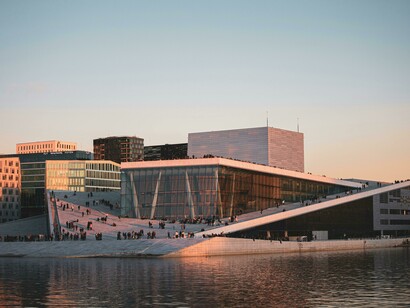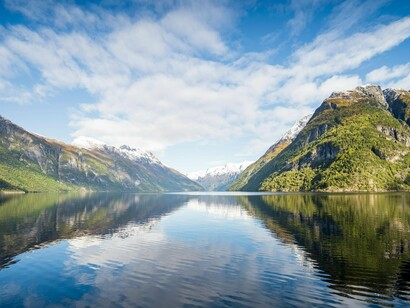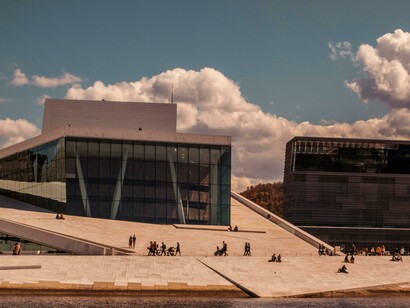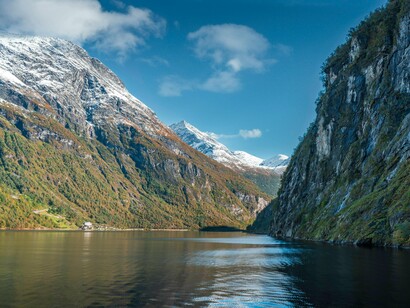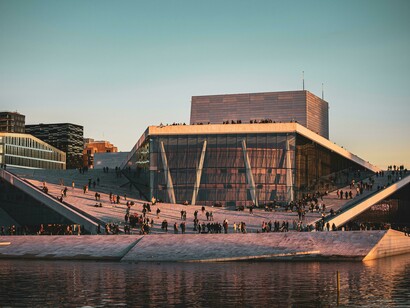Let me share a story that’s close to my heart.
Many years ago, I was part of a Street Children program in Davao City. One ordinary day turned extraordinary when a Norwegian man, walking through the streets of Davao, found himself wondering how he might help kids like me. He and his Filipina wife eventually arrived at the drop-in centre and spoke to one of the street educators I called Kuya Jojo. Somehow—by grace or fate—I was the one recommended to be helped. That was the lowest point of my life because my father was confined to the hospital due to his pancreatic cancer. After I met that couple in the Paginhawaan Drop-In Center, that couple decided to sponsor my education, from high school all the way to college.
Because of them, I grew up observing Norwegian culture from afar, and often I found it curious, even strange. Norwegians seemed so bold, so different, so provocative in the way they thought and lived. I never fully understood it—but I was always fascinated. Eventually, the couple divorced. I won’t speak of the reasons, out of respect for their privacy. But every time I received a postcard from the Filipina woman—sent from Norway—I would look at the images and whisper to myself, “One day, I’ll see this place. I’ll be there.”
And then, after more than two decades, I finally stood in Norway, because I got the Fellowship Program in Germany, which gave me the chance to visit the country. I met that same woman who helped change my life. And in that moment, I couldn’t help but ask myself, “Am I dreaming? Is this a fantasy? Do all dreams eventually come true? Or is God just incredibly good?”
The truth is, what I held in my mind and heart about Norway was already bigger than what the country could ever offer me in one short visit. But even during that brief week, I was filled with awe, gratitude, and wonder. I just hope one day, I’ll return—not only to see more of its majestic nature, but also to reconnect with the pieces of my own journey that started with a simple act of kindness.
Norway is a truly unique country, blessed with breath-taking natural beauty that’s unlike anywhere else in the world. Its dramatic landscapes—majestic fjords, serene lakes, and towering mountains—create a scenic experience that feels almost otherworldly. Even traveling by train in Norway is a peaceful experience; the silence inside is striking. It made me wonder why it’s so quiet, and then I realized—perhaps Norwegians spend more time immersed in reading and quiet reflection than in casual conversation. There’s a calm, introspective culture here that beautifully mirrors the tranquillity of the landscape.
If you truly want to understand art in its most profound and unique form, then you must come to Norway. Nowhere else have I seen a place quite like Vigeland Park in Oslo—an extraordinary open-air gallery with nearly 300 sculptures, all masterfully crafted to portray the full spectrum of human life. From birth to death, joy to despair, every statue captures raw human emotion and the complexities of our existence. It’s more than a park; it’s a powerful reflection of the human condition told through art.
My former sponsor served as my tourist guide and helped me visit the Oslo Opera House, which offers more than just architectural brilliance—it invites you to explore life from different perspectives, simply by walking through its various spaces. I believe it was intentionally designed to evoke reflection. As you climb to the rooftop, there's a surreal sensation—you’re elevated, yet still grounded. Walking along its sloping surfaces, you begin to feel small, almost insignificant, and when you see others from a distance, they too appear as tiny figures against the vastness of the structure. In that moment, you realize a deeper truth: we are all just parts of something larger, woven into the fabric of human experience. Nestled by the Oslofjord, this place isn’t just a building—it’s a philosophical experience in stone, glass, and space.
I also went to the Oslo Library, which is truly something else—it even has a dedicated section for infants. For the first time in my life, I was amazed to see babies in a library, gently exploring books with their parents, touching pages with innocent curiosity. It was a beautiful sight. And then it struck me—maybe this is part of the reason why many Norwegians think so differently. Maybe it’s why they seem so reflective, so intelligent. Or maybe I’m biased. I took a photo there with a book in which the title is “Am I Normal?” which for me is a question of my own self-existence.
The Norwegian people seem to be living the kind of life they truly want—simple, intentional, and closely connected to nature. Much of the country reflects this harmony: many homes are made of wood, blending beautifully with the forests, fjords, and mountains that surround them. While the trams in Norway may not be brand new, the trains are impressively modern—so quiet, in fact, that you barely hear a sound as they glide through the landscape. I found myself wondering if this silence is because of their advanced technology or perhaps the country’s access to sustainable energy sources. Whatever the reason, it adds to the calm, almost meditative atmosphere of daily life.
What surprised me most, though, was how open and approachable Norwegians can be—even if you don’t speak their language. There’s a warmth beneath their quiet demeanour. Many are willing to engage in conversation, especially if you show curiosity or kindness. Despite cultural differences, you feel welcomed. Their openness to other cultures and respectful way of connecting makes you feel that, for a moment, you're part of their peaceful world. My former sponsor brought me to her office, and I was surprised to see that her office has its own pantry where people can take lunch, and it was in buffet style. I thought about how lucky we are if we can find such a kind of workplace. The office was designed like a home with plants and feels like home.
I also had the chance to visit Oslo’s city centre, where two iconic sites stand in quiet grandeur: the Parliament building and the Nobel Peace Center. As I stood there, taking in the surroundings, I couldn’t help but reflect on the significance of these spaces. These are not just architectural landmarks—they are places where history unfolds and where humanity's highest ideals are honoured. The Nobel Peace Prize, awarded right here, has celebrated some of the greatest minds and most compassionate hearts ever to walk this earth—individuals who have committed their lives to peace, justice, and the sustainability of humankind.
Standing there, I was filled with a deep sense of awe. How powerful it is that a single place can hold space for such monumental recognition—reminding us that no act of goodness, no effort for peace, is ever too small to be remembered or celebrated. This place doesn’t just honour greatness—it inspires it.
Personally, I deeply want to honour the Norwegian and Filipino couple who supported my education. They did an incredible job helping me, and thanks to their generosity, I’m now able to visit this amazing place but more than the financial support that they gave me. They let me have dreams and make them come true.



